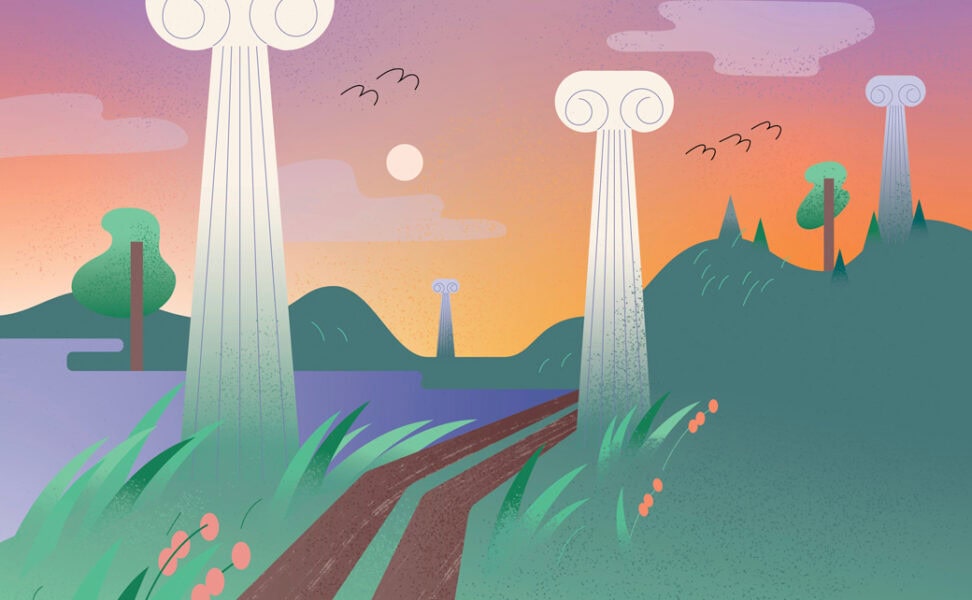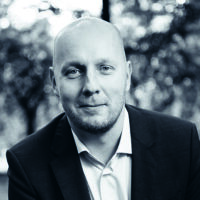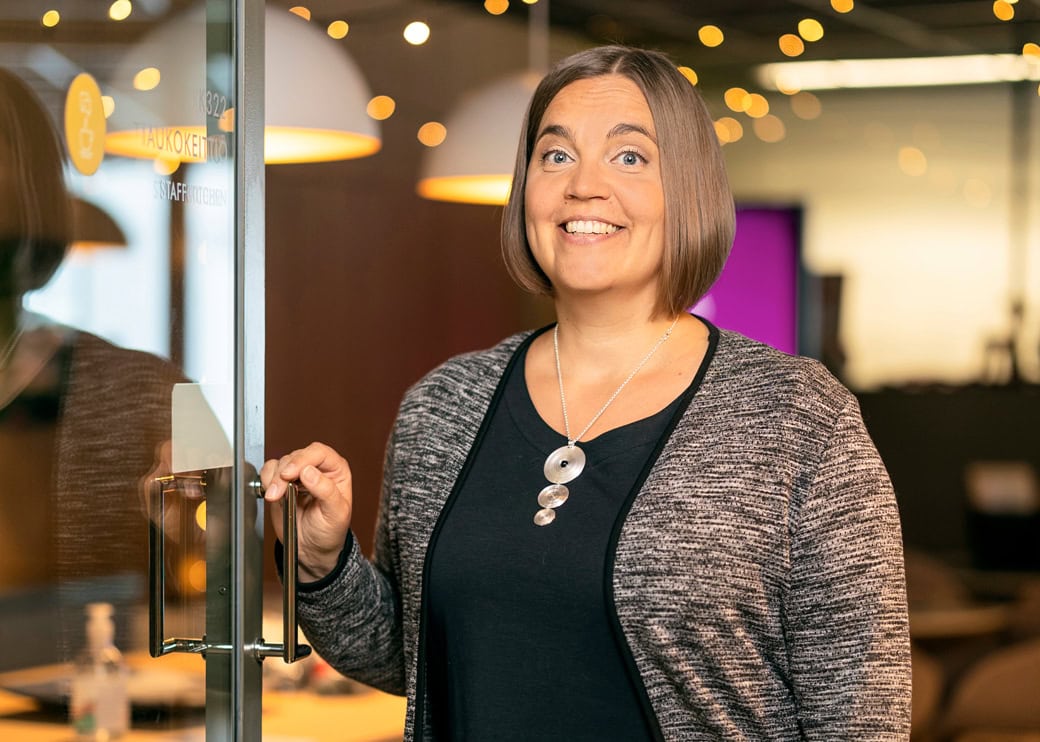
Heidi Kuusniemi: Professor of time, place, and space
Professor of the Year 2025 is Heidi Kuusniemi, a Professor of Computer Science at the University of Vaasa specialising in geospatial technology and satellite navigation. She wishes to develop solutions and methods to serve the wide greater good. During her career, revolutionary strides have been made in the field of satellite navigation.
Text Minna hiidensaari images sami pulkkinen english translation marko saajanaho
“Finland is a surprisingly strong global space actor. Our positioning expertise is extremely good. It is important for us to have space research in Finland. Our digital society could not operate without satellites, which are like sharp eyes around the Earth”, says Professor of Computer Science Heidi Kuusniemi, chosen as Professor of the Year 2025.
Kuusniemi tells us Finland has a long tradition of studying how Earth lies in space. The Finnish Geodetic Institute was founded in newly independent Finland in 1918. Finnish research has also blazed trails internationally.
The Professor of the Year wishes for the societal significance of satellites to be better recognised and for the EU’s Galileo satnav system to be properly appreciated for its quality.
“Time comes from near-Earth space. GPS is like a massive atomic clock.”
The information conveyed by satellites is crucial for atmospheric research, the operation of banking systems, weather forecasting, emergency calls, and traffic applications, to name a few examples. The Universal Time system is also guided with satellites.
“Time comes from near-Earth space. GPS is like a massive atomic clock.”
Kuusniemi researches the use of satellites and especially their reliability in e.g., synchronising time networks.
“Radio signals are vulnerable.”
The good and bad guys of satellite data users
Many positive things are accomplished using the eyes of the satellites circling our planet, but ethical and security challenges are also associated with their use.
“Many satellite technologies are dual-use technology. Navigation and geospatial data are widely used for military purposes.”
The most famous satellite navigation system is GPS (Global Positioning System), which has been in use since 1978 and was originally developed for military use in the United States. Kuusniemi notes that the European Union’s Galileo satnav system is primarily designed for civil use but is also used by authorities.
“Of course, Europe is now considering whether the system should include a defence element of some sort.”
”Illegal, purposeful interference has increase despite protection measures. Some of the trouble spots include the Black Sea region and Korea.”
In the current global political situation, satellite navigation systems find themselves as targets of interference increasingly often.
“Illegal, purposeful interference has increase despite protection measures. Some of the trouble spots include the Black Sea region and Korea.”
Finland is also a current trouble spot for interference. Thus, Kuusniemi wants to focus on researching the reliability of satellite navigation, interference prevention measures, and identifying errors.
To satnav through physics
Kuusniemi already developed an interest in natural sciences and technology as a child. Her thinking was nurtured by the environment she grew up in.
“My father, a Master of Science in Engineering, worked on product development and loved inventing things. The physics and maths teachers at my upper secondary school in Jakobstad were lovely and always encouraged me, like when my physics teacher called me Head Physicist.”
Kuusniemi, who studied advanced physics in upper secondary school, took an astronomy course in summer school in Punkaharju.
Kuusniemi’s academic performance got her into the Tampere University of Technology to study technical physics and mathematics.
“I started studying to become a teacher and then switched to Software Engineering.”
”I got to choose from many research projects and pick the one that interested me.”
Her career path started to take shape when the professor of Signal Processing was recruiting second-year students for a summer job.
“I got to choose from many research projects and pick the one that interested me.”
Fingerprint recognition and radar technology attracted Kuusniemi. Next, she already made it to a satellite navigation related project as a research assistant. During this time, mobile phones were developing rapidly.
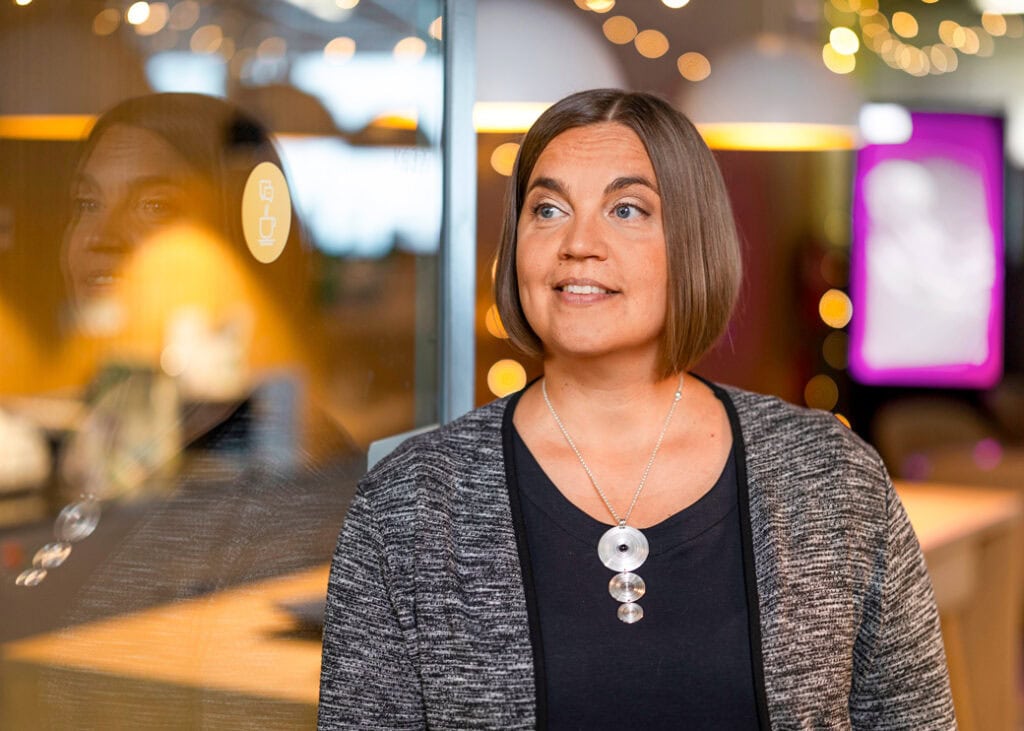
“That research was funded by Nokia.”
Kuusniemi quickly graduated as a Master of Science in information technology (with distinction) and was admitted to her university’s Doctoral School. Business cooperation funding secured by Nokia opened a research exchange position in Canada to work on her doctorate. Kuusniemi got her PhD at the age of 25.
“At the time, the University of Calgary was one of the very few places specialising in GPS.”
After finishing her PhD, she worked at Fastrax Ltd on Suunto GPS devices, among others.
“I learned to code extremely well.”
Then, she began to long for a return to the scientific world. Kuusniemi got a job at the Finnish Geospatial Research Institute, known at the time as the Finnish Geodetic Institute. She initially worked as a Specialist Research Scientist, then became Research Manager.
From bus-sized to milk carton
Massive strides have been made in Kuusniemi’s field during her career.
“The revolution in the satellite navigation field happened in 2000 when GPS was opened for more accurate and wider global use with an executive order during President Bill Clinton’s administration.”
Until that point, the system’s signals had been in general use only selectively, which meant the coordinates were intentionally poor.
“There was a gradual realisation that, for example, emergency calls by mobile phone might be risky without knowing the exact location of the caller.”
”There was a gradual realisation that, for example, emergency calls by mobile phone might be risky without knowing the exact location of the caller.”
The opening of GPS was followed by enormous growth.
“The coordinates became more accurate. The system was adopted by many industries like car navigation systems and sea and air traffic applications.”
The immense need for geospatial data has its consequences. One challenge regarding satellites is reducing the amount of space debris. Satellites that have reached the end of their service life continue circling the globe.
“In a way, space is another exhaustible resource. Big navigation satellites orbiting at 24,000 kilometres are roughly the size of buses. New satellites cannot be sent to orbit if there are too many old, decommissioned ones still out there.”
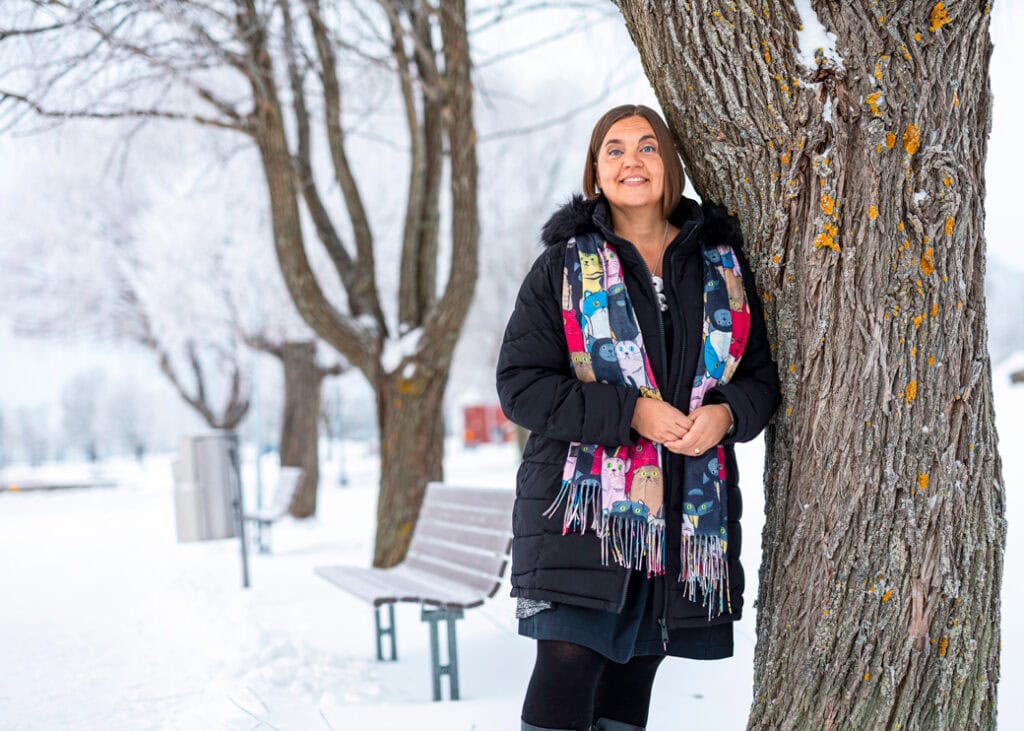
Small satellites, orbiting roughly 500 kilometres from Earth, are emerging as a promising solution for satellite navigation as well. According to Kuusniemi, these are the size of a milk carton.
“Focusing on sustainable operation plays a large role in the Finnish space strategy. Professor Minna Palmroth is the director of a top unit for sustainable space science and technology, which develops methods for taking these small satellites out of orbit, for example.”
Kuusniemi also mentions the ICEYE company, which got its start at the Aalto University and develops radar satellites weighing approximately one hundred kilograms.
“Plenty of small satellites will be needed in the future.”
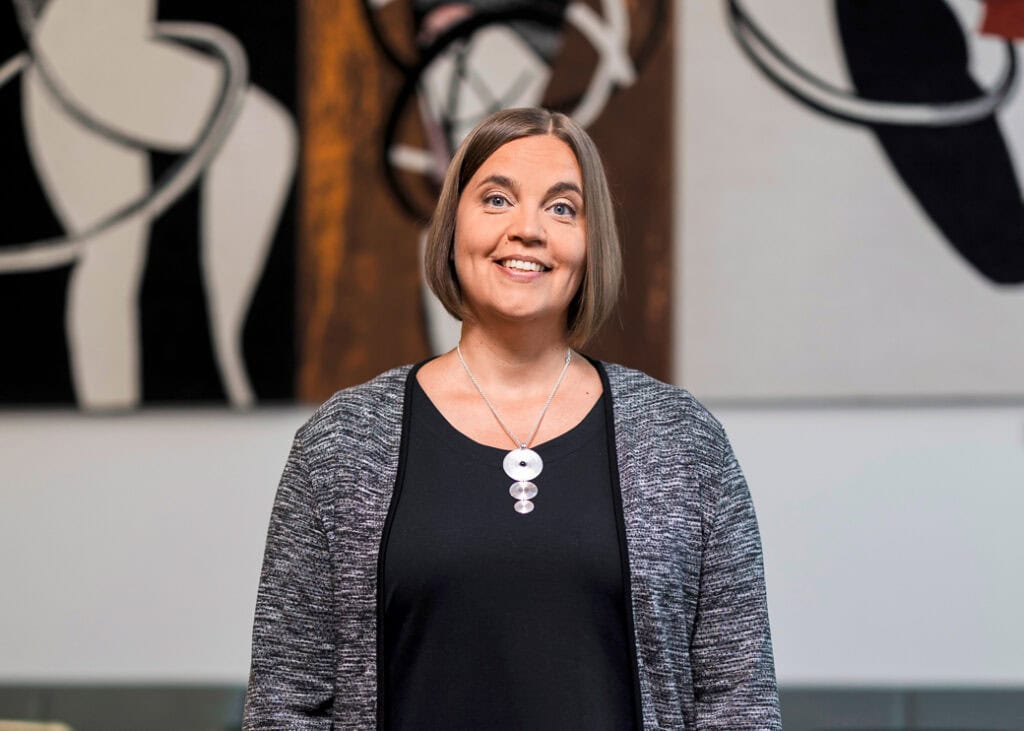
In addition, energy efficiency requires its own solutions.
“In the field, many steps have been made towards geospatial tech that does not require a continuous connection to satellites.”
In addition to small satellites, the interesting development paths of the future include improving machine learning, new quantum computing approaches, and the development new sensors. Satellite data also plays a significant role in studying and preventing climate change.
“For example, we can plan sensible resource use with traffic routing.”
Multidisciplinary academic seller and enabler
Kuusniemi says her dream has come true. She has always wanted to be a professor.
“Doing science is important to me. I want to develop methods and solutions for wide use, preferably in an open and public manner rather than for one individual operator. I have also always liked teaching. As a teacher, I try to focus on presenting information in an understandable manner and allowing my students to combine theory with practice.”
The Professor of the Year accolade was a surprise, however.
“My path to professorship has been so different. I have worked at a company and have no massively lengthy list of publications to my name. That being said, there is now this big barrage of publications through research cooperation with many others.”
A significant number of Kuusniemi’s working hours are spent drafting project funding applications. Project consortiums include multiple operators.
”I like building multidisciplinary, diversified projects.”
“I like building multidisciplinary, diversified projects.”
Alongside scientific goals, she also considers the industrial and commercial relevance of these projects.
Kuusniemi describes herself as an academic seller. She has noticed the important role communication plays on many levels. A communication officer is always appointed for her projects.
“You have to be able to tell the wider audience about your research results. For example, Academy of Finland projects have a societal impact criterion.”
Equally, fruitful cooperation with business often depends on successful communication.
“You must be able to clearly communicate to the companies how a joint project benefits their business. You also have to be able to communicate that this is also about conducting science and ensure the progress of scientific work.”
Management work also takes up plenty of the professor’s time. Kuusniemi has 24 subordinates. She summarises her role as manager with two words: enabling growth.
One of the best parts of the job can be found in enabling. Kuusniemi finds her job most rewarding during the moments when she sees the fruits of her enabler role: when funding has been secured for a project and an opening meeting is arranged with the partners; when a member of her team has received a grant; or when a team member gets to participate in a research exchange or otherwise advances their career.
Enabling also means fierce defending.
“Sometimes, I feel like a lioness. I fight for my subordinates going from one temporary job to another. I have had similar defenders such as my doctoral thesis advisor, Professor Jarmo Takala. He made sure opportunities opened up for me and I was able to go to Calgary to work on my thesis, for example.”
For the cause of global problem-solving and innovation capacity
Kuusniemi is happy to spread the word about the joys and importance of science and her field of research.
“I often give presentations to young people and students. I always emphasise how fun programming is. When I tell my career story, I highlight how technological fields may help solve many of the world’s problems.”
The professor does not struggle to cope with work.
“I like my job very much. I get a lot of energy from the accomplishments of my team and colleagues. If something doesn’t work out, we move on together to something new. My job is also my hobby.”
”More reliable navigation. Sensor-based identification systems. Certified geospatial data connected to quantum computing.”
Kuusniemi is also involved in the UN’s Women In Space activities and the Women In PNT (Position, Navigation and Timing) -research community.
Her family also helps energise her. Kuusniemi has an eleven-year-old daughter.
When asked about her dream areas of research, Kuusniemi muses that she can already research everything she wants.
“More reliable navigation. Sensor-based identification systems. Certified geospatial data connected to quantum computing.”
The main source of uncertainty in academic work comes from the lack of research funding.
“We lose many skilled researchers because of that.”
Kuusniemi reckons the university world could use more willingness to take risks to advance research careers.
“When the entire career path looks uncertain, that hurts the national innovative capacity. I would like businesses to join in to help us innovate.”
Kuusniemi says her outlook is positive now that, for example, Business Finland has new forms of funding to facilitate cooperation between businesses and academic professionals.
Heidi Kuusniemi, D.Sc. (Tech.)
Born: 1979 in Jakobstad, Finland
Work: Professor of Computer Science and director of the Digital Economy research platform and the Kvarken Space Center at the University of Vaasa. In addition, a part-time Research Professor in Satellite Navigation at the Finnish Geospatial Research Institute of the National Land Survey of Finland.
Family: Spouse and 11-year-old daughter
Hobbies: Playing the oboe and piano, relaxing at cottage amongst nature, and enjoying the speedy thrills of downhill skiing.
What are you known for in your work community? Constant enthusiasm to come up with new project ideas and find funding to realise them, extensive partner networks, and a mentality of encouraging and appreciating everyone.
What are you not known for? Eurovision fandom (one of the highlights of the year!) and skill as a midwife for cats.
